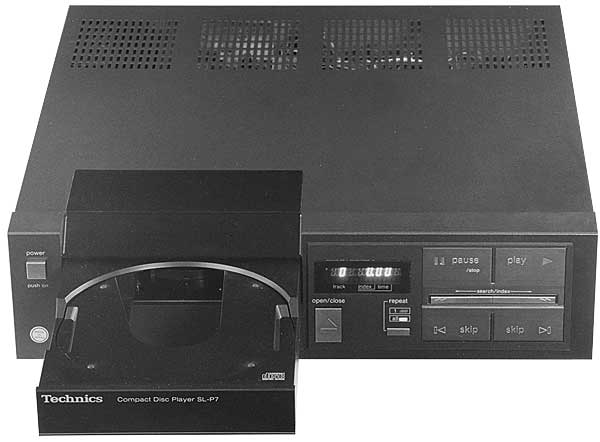CD: The story so far Page 2
In contrast to most of the Japanese players which employ a 16-bit converter and a near 'brickwall' output filter at 22kHz, the Philips designs employ a 14-bit converter. Not as simple as it first appears, in this system the sample rate and bit depth are both increased, the former by 4x. This technique provides noise suppression that is equivalent to 16-bit, and allows the use of higher frequency transversal digital filtering. This reduces roll-off slopes for the output filters, giving theoretically preferable transient response and reduced overshoot. Double converters are used, providing good phase match between channels.
![]() Sound Quality
Sound Quality
The Philips players have sounded pretty good from the start, and have continued to improve in small but beneficial ways. Tailored to Polygram's discs, the error correction was also good from day one. As a group the Philips/Marantz models have consistently provided a clean 'open' sound, with clear articulate bass, a natural and detailed midrange, and 'airy' 'delicate' treble. Ambience and depth effects were rendered well, and the sound was essentially unfatiguing. Simply put, the latest samples, exemplified by a current CD-73, maintain this quality at a level where a clear advantage is apparent over most of the similarly priced competing machines. Despite its low price tag, the Marantz CD-73 is capable of satisfying critical standards in even advanced systems.
Conclusion
Thanks to prices that start from £350 for the basic, very compact top-loading model, the Marantz/Philips machines are no-frills packages offering a very fine standard of sound quality. Despite improvements to other players, the current CD-73 comfortably fends off the opposition, and is the logical choice for the more discerning customer who simply wishes to play CDs with a high standard of reproduction.
In sonic terms these players offer fine value for money. Roll on the second generation with a faster transport and a few more convenience features. The companies' lobbying for an increased tariff at this time against non-European players remains a mystery to me, perhaps reflecting marketing rather than engineering credibility.

Sony CDP-101
Fully reviewed back in March 1983, the CDP-101 was in many respects a trendsetter, offering good track access, fine facilities, plus remote control; it lacked only the pre-programming of music tracks. Since then this tidy drawer-loader has undergone minor improvements, resulting in better error correction and sound quality, indicating the need for a brief reassessment.
![]() Sound Quality
Sound Quality
Compared with the earlier examples, the current model gives a slight reduction in mid register 'hardness' and 'compression', a mild improvement in clarity over all areas of the spectrum, and a touch more depth. It is marginally superior to the earliest Philips examples, but falls slightly behind the company's latest versions as exemplified by the Marantz CD-73 tested in this group. However, by CD standards the CDP-101 is in the top category for sound quality.
Conclusion
Sony's 1984 CDP-101 package includes a price reduction to £450, remote control, improved error correction, plus competitive sound quality. The final choice against a European model will depend on personal decision concerning relative sound quality and evaluation of the various facilities.

Technics SL-P7
Priced at just under £400, the new SL-P7 is a compact, no-frills drawer-loading player with some second generation technology, which is just as well considering the rather basic performance offered by the first Technics SL-P10 machine. The SL-P7 lacks a numeric keyboard, but can access both track numbers and index points sequentially; this procedure is in fact quicker than it might appear. The search and index keys have two speeds according to the length of time they are depressed, and sections of audio are provided to aid cueing.
One key to this player's moderate cost is its new optical system and transport, which uses fewer parts than its predecessor and new precision mouldings rather than machined components. We can expect this evolution to continue, much as did the development of the direct-drive motor. This was initially a costly component using extensive outboard electronics, but it now offers a much higher standard of performance at a more modest cost, not to mention minimal manufacturing content.
![]() Sound Quality
Sound Quality
Cross-checking with the SL-P10 showed that this player did deliver a superior sound, which should please Technics. When announced, the performance versus price of this machine looked quite competitive, but the subsequent price reduction policy of other major manufacturers, as well as some 'down market' introduction of machines by other entrants, has left the SL-P7 rather less strongly placed than it might otherwise have been.
























































